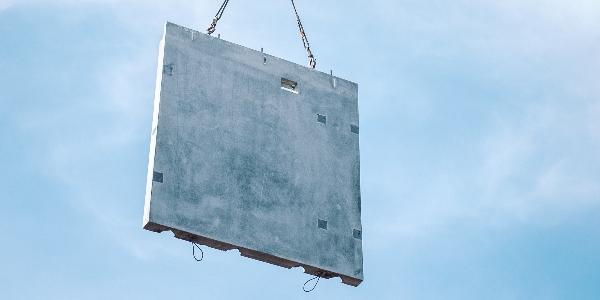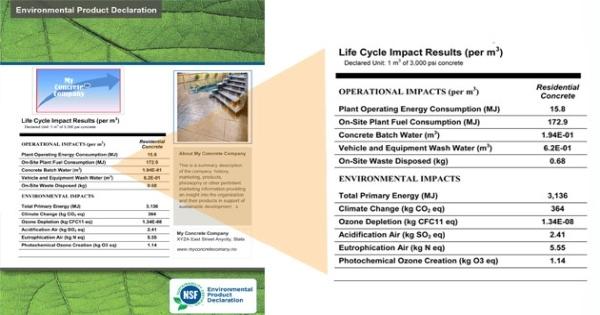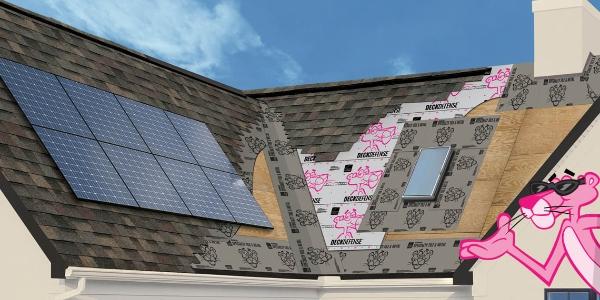Can we Make Grey Green? The Path to Reducing Embodied Carbon in Concrete

By Lisa Barnard, LEED AP, WELL AP, GCP.
The durability of concrete has made it ubiquitous in the building industry. See how we can improve its sustainability and reduce our carbon footprint.
Concrete is a mixture of cement, water and aggregates and includes admixtures. The production of cement contributes an estimated 85-90 percent of concrete’s carbon footprint.
CO2 is produced during a chemical reaction that takes place when cement is being manufactured. In addition, the high-heat kilns used to produce cement run on fossil fuels, which results in more CO2 emissions.
The Global Cement and Concrete Association (GCCA) has aligned leaders in the industry to commit to producing carbon neutral concrete by 2050 and has created a 2050 Net Zero Roadmap. Many manufacturers have made public commitments to significantly reduce net CO2 emissions.
In addition, building owners are understandably demanding a significant reduction in embodied carbon in their structures. That is, the overall energy consumed by all of the processes associated with the production of a building, from the mining and processing of natural resources to manufacturing, transport and product delivery. For example, when Arizona State University set out to build a high performance research facility to house its School of Sustainability, it required a 40 percent reduction in the cement content in the concrete.
Improving the sustainability of cement and concrete
What if you could actually reduce the amount of carbon in concrete throughout the product lifecycle? This means taking into account every stage of the concrete development process, from the design of the infrastructure, to the materials that go into making concrete, the delivery of the concrete and the service life of the resulting concrete structure.
There are tremendous opportunities to reduce the carbon footprint of concrete throughout its lifecycle by:
Lowering the amount of cement needed in concrete
The less cement needed in the concrete mix, the more CO2 is reduced. Cement reductions can be achieved in two ways:
- Using concrete admixtures called water reducers that allow you to achieve higher strength concrete with less cement in the mix
- Using concrete admixtures called strength enhancers that allow for the use of more raw materials that are alternatives to cement, while preserving concrete strength
For example, CHRYSO & GCP’s EnviroMix® SE is an inventive strength enhancer offering for concrete that reduces the cement factor by approximately 10%, in addition to the water reducer, while maintaining premium concrete quality and performance. Water reducers are a powerful solution to reduce cement factor, but they can reach limits. EnviroMix® SE is a powerful solution to further reduce cement, cost and carbon by increasing the strength of concrete. This next generation admixture solution combines high performance and carbon footprint reduction, to accelerate the pace of low carbon transition in the construction industry.
Reducing rejected concrete loads through the automation of slump management
The consistency of concrete can fall out of specification during the delivery process for many reasons, causing it to be rejected when it arrives at the job site. This inefficiency costs concrete producers money and creates waste.
When the concrete is on the job site, the contractor will often add extra water to make the concrete more workable. However, this can weaken the concrete.
The VERIFI® in-transit concrete management system is the first ever technology to address these inefficiencies in the concrete delivery process by actively managing concrete from batch plant to job site.
The automated system encompasses in-truck sensors, injection hoses and data intelligence. It collects real-time data about the concrete properties as the concrete batch travels to the job site, and automatically adds exactly the right amount of water and admixture, as needed and if necessary, to keep and deliver the concrete as it was specified. This results in higher quality concrete being delivered to the job site, with far fewer rejected concrete loads, less water and admixtures consumed, and less fuel and time wasted driving back and forth with replacement batches of concrete.
Extending the life of concrete structures
An important factor in understanding embodied carbon is determining the service life of the concrete structure itself. Obviously, improving the durability of concrete has a sizable impact on how long the structure will last, and thereby an impact on the structure’s carbon footprint. There are several solutions to concrete that can increase the service life of structures:
- Air entraining agents create small air bubbles in concrete, which provides pressure relief when water in the concrete expands during freezing. This helps prevent cracking.
- Corrosion inhibiting admixtures create a chemical barrier that protects steel reinforcement within concrete.
- Macro-fibers are lightweight synthetic materials that are dispersed into the concrete mix to improve impact resistance, durability and longterm crack control properties.
Enabling concrete and cement producers to reduce their carbon footprint and extend the life of their projects makes an exponential difference around the world. New technologies for sustainable construction play a critical role in helping to reduce energy consumption, lower the carbon footprint of cements and concrete and foster the circular economy. In the pursuit to be carbon neutral by 2050 in the concrete industry, solutions must not only reduce carbon throughout the lifecycle of concrete, but also reduce costs and deliver performance.
Learn more about GCP in their Coffee Shop Directory or visit www.gcpat.com.






















Comments
Leave a Reply
Have an account? Login to leave a comment!
Sign In